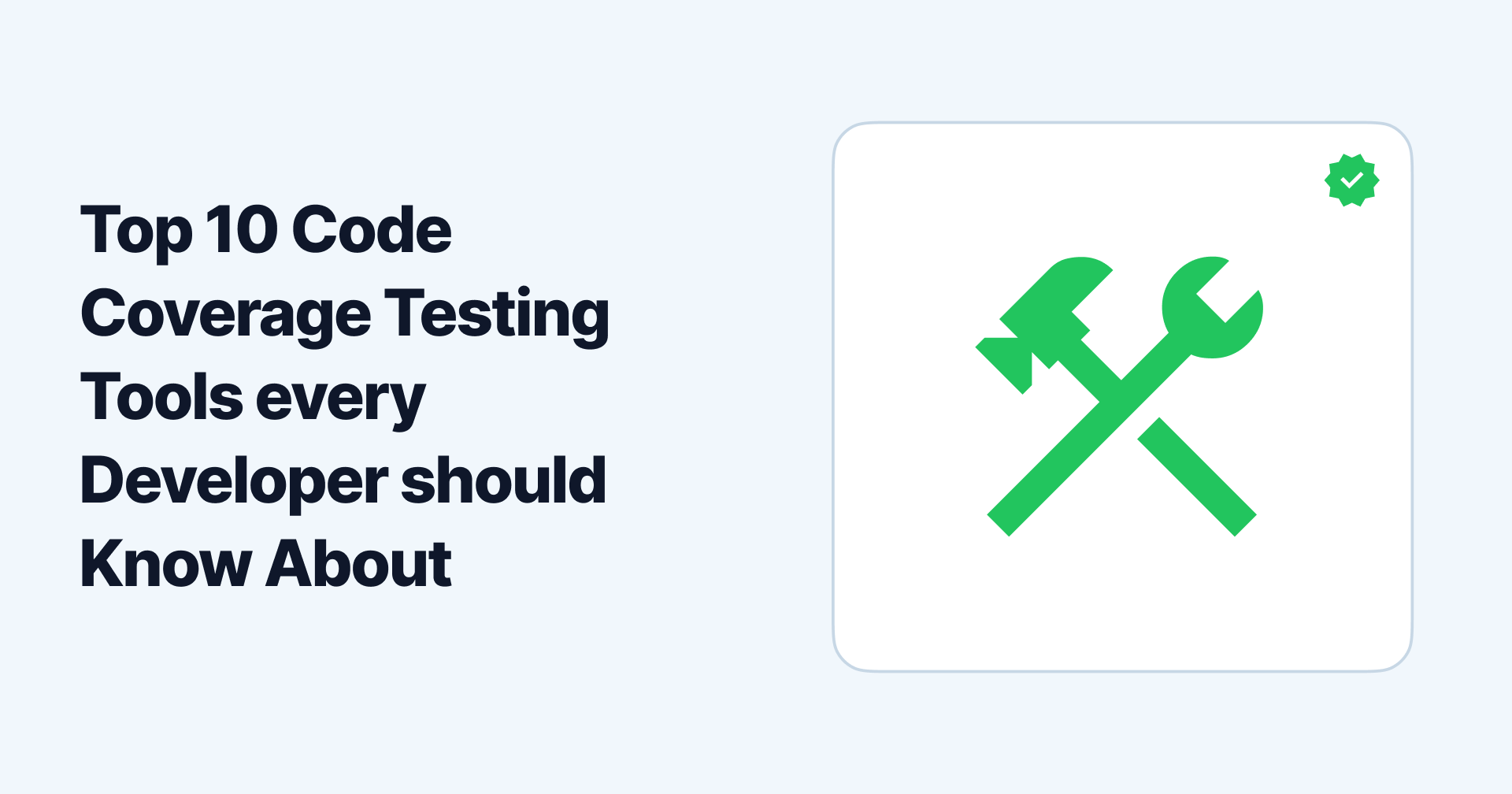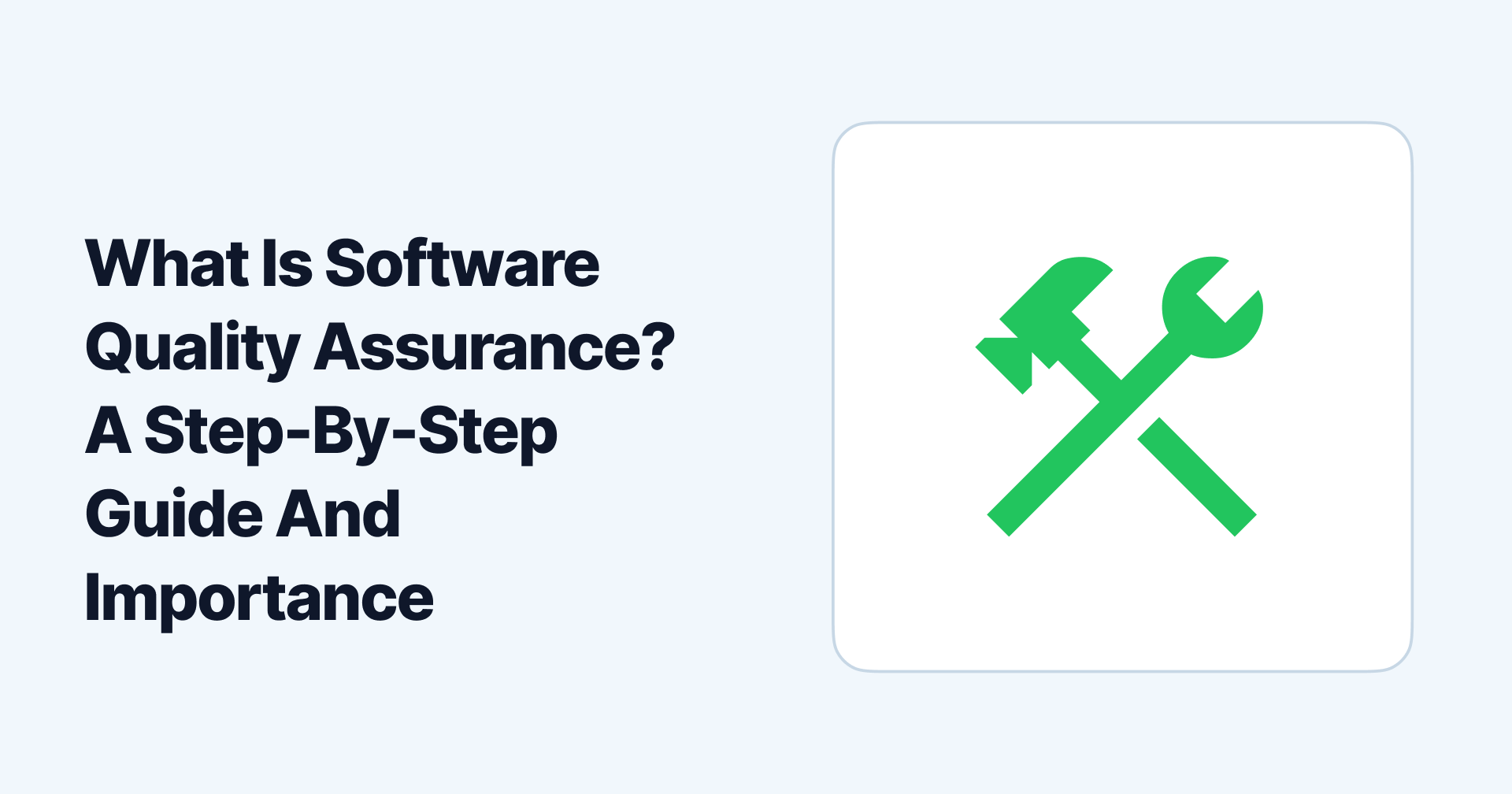As a developer, you know how crucial it is to ensure your code is as clean and error-free as possible. One way to accomplish this is through code coverage testing, which helps you measure how much of your code has been executed during testing.
The correct code coverage tool can make all the difference in terms of the quality of your code. With so many options on the market, it can take time to determine which tools are the best for your project.
Using the right code coverage testing tools is essential to achieve reliable results. This blog will introduce you to the top 10 code coverage testing tools every developer should know about.
Using one or more of these tools ensures that your code is thoroughly tested and that any errors are caught early in the development process. This way, you can have confidence that your code is reliable, efficient, and performs as intended.
What does Code Coverage mean?
In simple terms, code coverage measures how much of your code has been executed during testing. It helps you understand how thoroughly your source code has been tested and whether any parts have been missed.
Code coverage is usually expressed as a percentage, with 100% coverage indicating that every line of code has been executed at least once during testing. There are several types of code coverage, including:
- Statement coverage
- Branch coverage
- Function coverage
- Path coverage
- Line Coverage
Each type measures a different aspect of code execution, providing a comprehensive picture of how well your code has been tested.
Using code coverage testing tools, you can measure and analyze your code coverage to ensure that your software is of the highest quality.
Code Coverage vs Test Coverage
You may have heard the terms "code coverage" and "test coverage" used interchangeably, but they refer to two concepts.
Code coverage refers to the percentage of code executed during testing, whereas test coverage measures whether tests are covering all the functional requirements of the application.
In other words, code coverage measures how much of the code is being tested, while test coverage measures how many tests are being run.
Benefits of Code Coverage Testing
There are many benefits to using code coverage analysis, and we've outlined four of them below.

1. Identifying untested code
Code coverage testing tools help you identify areas of your code that must be adequately tested. By ensuring that all parts of your code are tested, you can reduce the likelihood of errors and improve the overall quality of your software.
2. Early bug detection
Code coverage testing tools help you catch bugs early in the development process. By identifying errors during testing, you can fix them before they make it into production, saving time and resources in the long run.
3. Increased confidence
By measuring code coverage, you can have confidence that your code is thoroughly tested and that any errors have been caught. This can help you make informed decisions about releasing your software and give you peace of mind that your software is of the highest quality.
4. Improved maintainability
Code coverage testing tools help you identify redundant or unused code, making it easier to maintain your codebase. When you remove unnecessary code, you can improve the performance and maintainability of your software.
How to Choose a Code Coverage Tool
Choosing the right code coverage testing tool can be a daunting task. To help you make the right choice, consider these four parameters.
1. Integration with your development environment
Look for a tool that supports your programming language and development framework and easily integrates with your existing testing tools.
2. Ease of use
A code coverage testing tool must have a user-friendly interface and provide clear and concise reports. It should also be easy to customize and configure to meet your specific testing needs.
3. Coverage metrics provided by the tool
The coverage metrics provided by the tool are essential to consider. Look for a tool that provides detailed coverage metrics, such as statement coverage, branch coverage, and path coverage.
4. Cost
Consider the long-term costs of the tool, including maintenance and upgrades, as well as any training or support that may be required.
10 Best Code Coverage Tools
- Allure TestOps
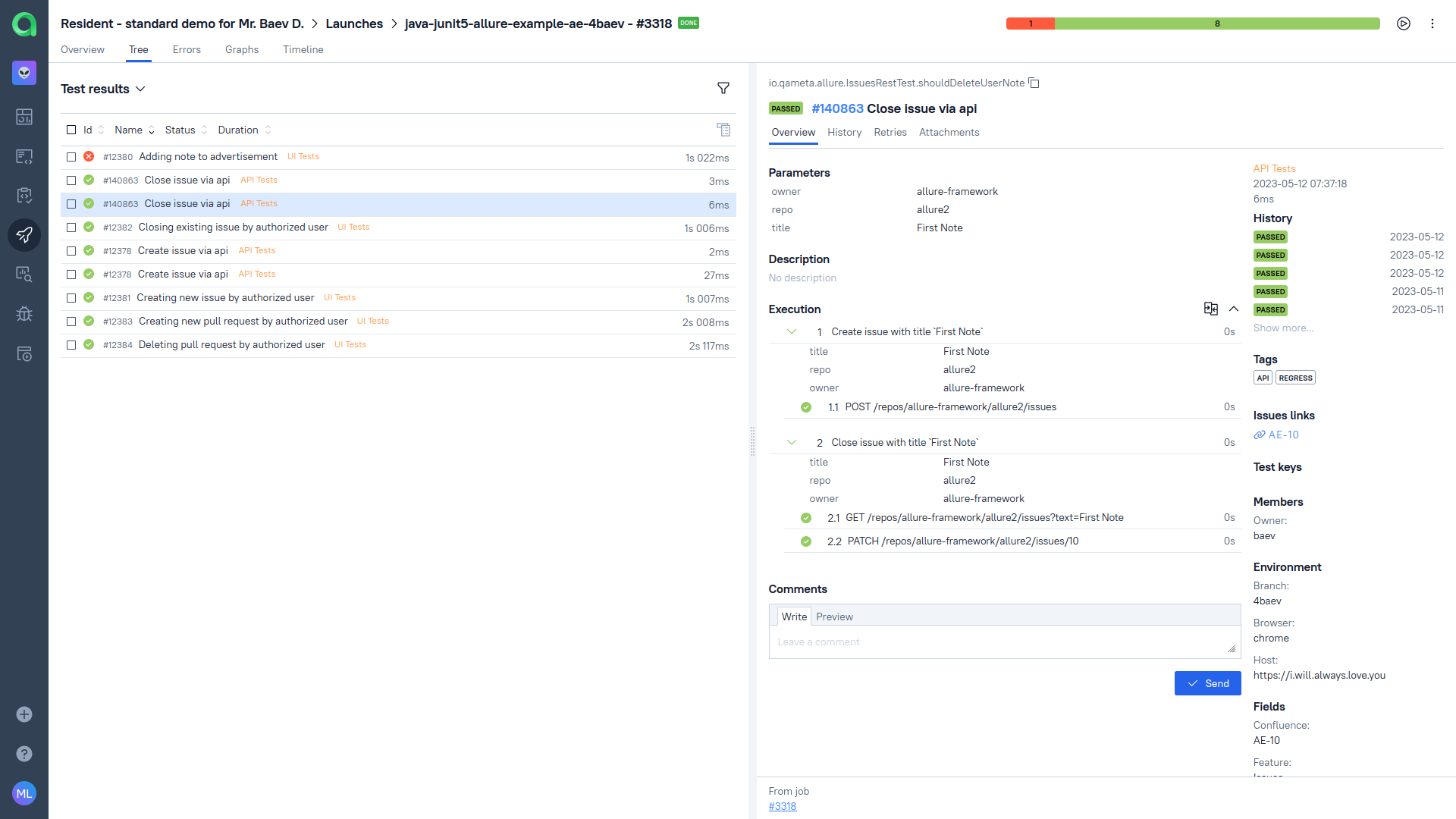
Allure TestOps provides a user-friendly interface that allows you to easily measure the code coverage of your software applications and track your testing progress over time. With the Smart Test Cases feature, test documentation is generated automatically from source code.
With Allure TestOps, you can view coverage metrics for individual test cases and for your entire test suite. The platform also includes advanced reporting capabilities, which allow you to generate detailed coverage reports and share them with your team.
Allure TestOps provides a centralized location for all your testing data, making it easy to collaborate with your team and track your testing progress. If you want the best code coverage testing tool, consider using Allure TestOps.
- JaCoCo
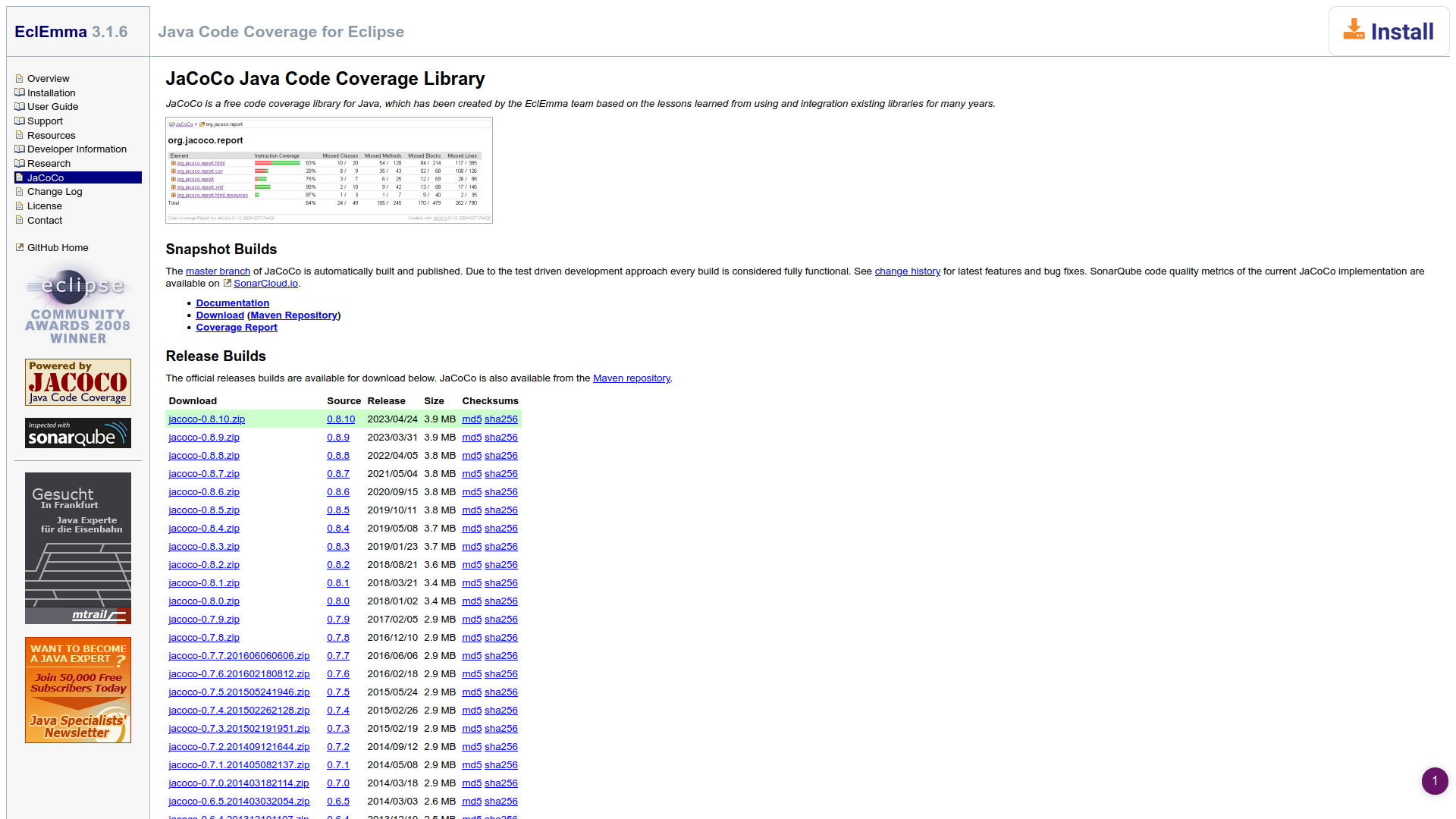
JaCoCo is a free and open-source code coverage library for Java-based applications. It provides comprehensive coverage analysis for your Java code, allowing you to measure the code coverage of your software applications and identify areas that may need additional testing.
JaCoCo provides a user-friendly interface for measuring code coverage, allowing you to view coverage metrics for individual classes, methods, and lines of code.
JaCoCo also includes advanced reporting capabilities, allowing you to generate detailed coverage reports in various formats, including HTML, XML, and CSV.
- Cobertura
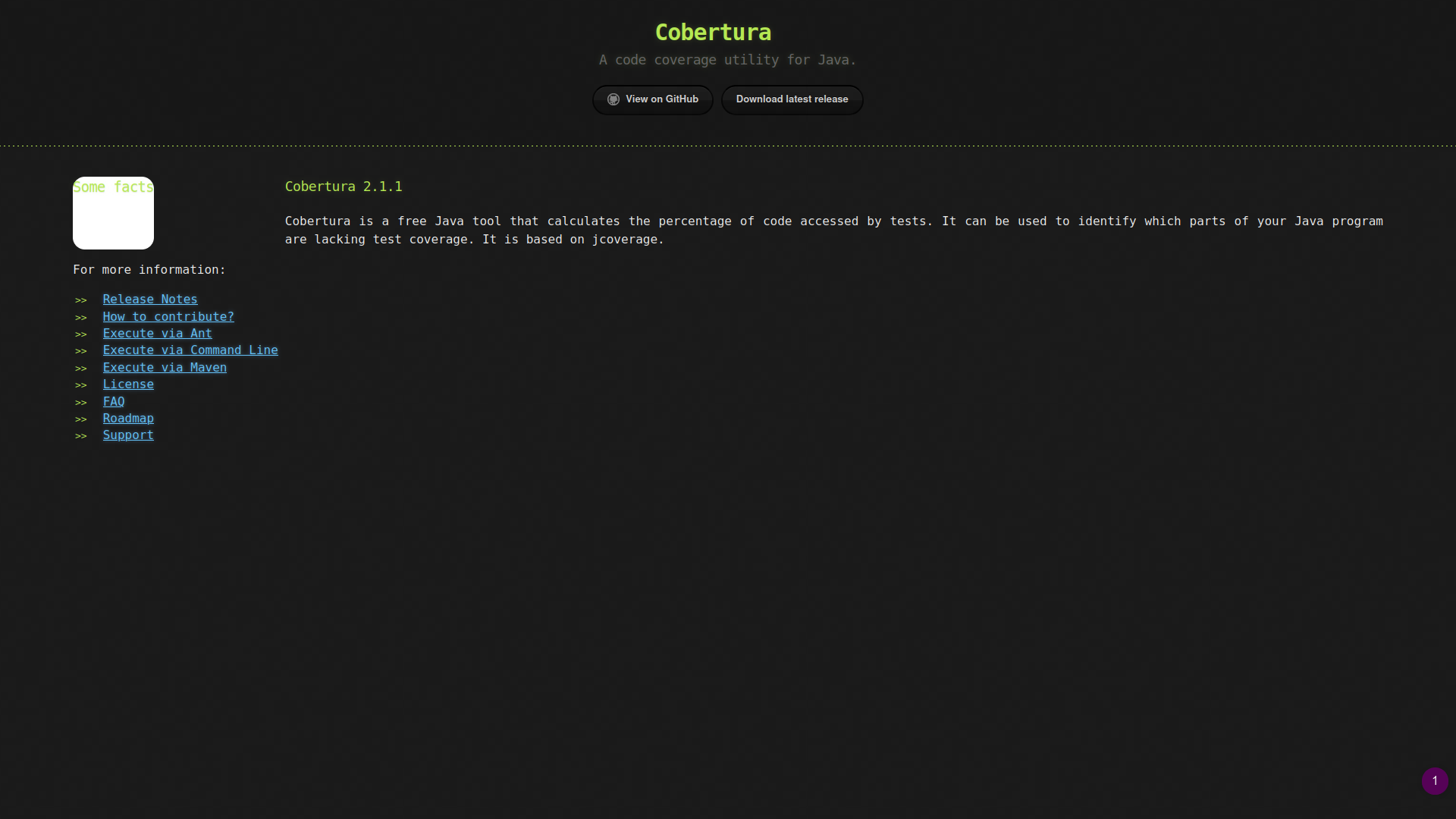
Cobertura is a free and open-source code coverage library for Java-based applications. It provides detailed coverage analysis for your Java code, allowing you to measure the code coverage and identify areas that may need additional testing.
Cobertura works by instrumenting your Java code to generate coverage information. It also includes advanced reporting capabilities, allowing you to create detailed coverage reports in various formats, including HTML, XML, and PDF.
- Emma
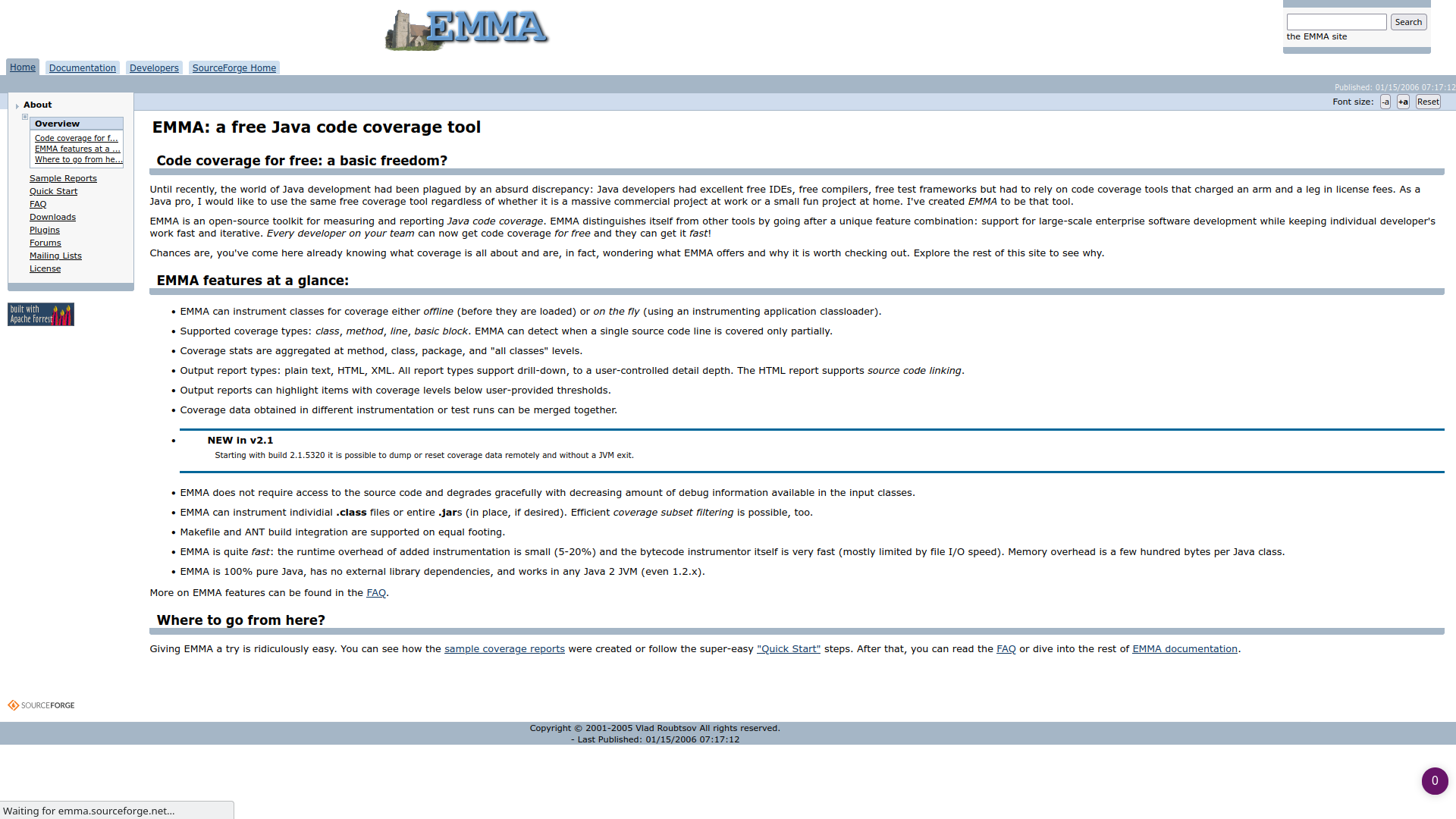
Emma is a free and open-source code coverage tool for Java-based applications. It provides comprehensive coverage analysis for your Java code, allowing you to measure the code coverage and identify areas that may need additional testing.
Emma works by instrumenting your Java code to generate coverage information. The library supports a wide range of coverage types, including line coverage, branch coverage, and method coverage.
It also includes advanced reporting capabilities, which allow you to generate detailed coverage reports in various formats, including HTML, XML, and CSV.
- Istanbul
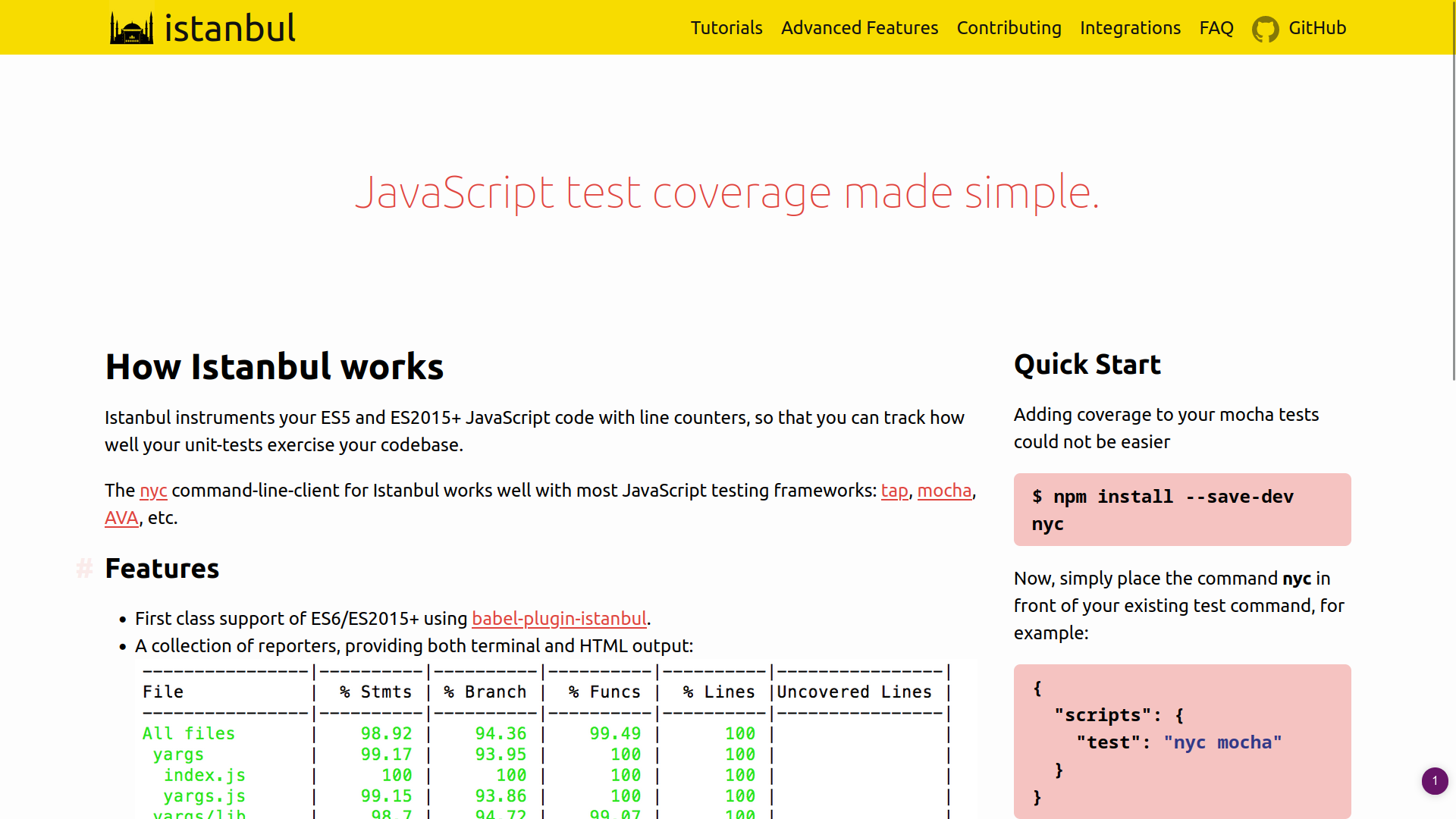
Istanbul is an open-source and free code coverage tool for JavaScript-based applications. It provides comprehensive coverage analysis for your JavaScript code.
Istanbul works by instrumenting your JavaScript code to generate coverage information. It also includes advanced reporting capabilities, allowing you to create detailed coverage reports in various formats, including HTML and JSON.
- NUnit

NUnit is a popular open-source unit testing framework for .NET applications. It allows developers to write and execute unit tests in C#, VB.NET, or other .NET languages, providing a powerful and flexible way to test the functionality of their code.
NUnit provides a simple and intuitive syntax for writing tests, making it easy for developers of all skill levels to start. It also includes many features and capabilities, including support for parameterized tests, test fixtures, and test suites.
It can be easily integrated with popular IDEs like Visual Studio and JetBrains Rider and build automation tools like MSBuild and TeamCity. This makes it easy to incorporate unit testing into your software development workflow.
- NCover

NCover is a code coverage tool for .NET applications that helps developers measure the effectiveness of their tests by providing insights into which parts of their code are being tested and which are not.
It allows you to track code coverage data for individual methods, classes, and even entire applications, giving you a clear picture of how well your tests exercise your code.
NCover offers a range of advanced features and capabilities including support for multiple coverage types (statement, branch, and method coverage), the ability to generate detailed reports and visualizations, and support for filtering and excluding specific parts of your codebase from the analysis.
- dotCover
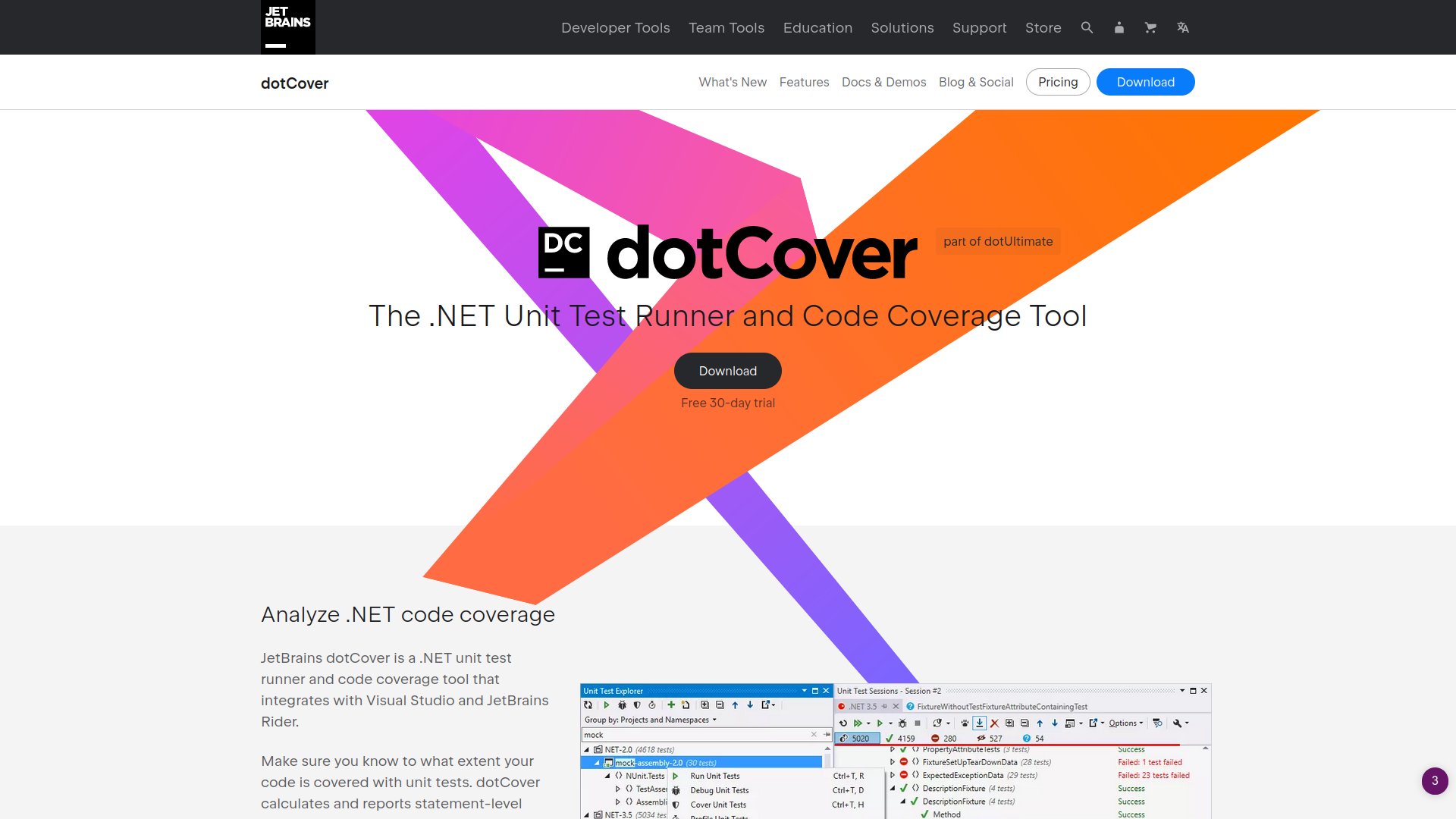
dotCover is a code coverage tool for .NET applications that helps developers ensure their code is thoroughly tested and meets quality standards.
Like NCover, dotCover also allows you to analyze your codebase and identify which parts of your code are being tested and which are not, giving you insights into the effectiveness of your testing efforts.
- Testwell CTC++
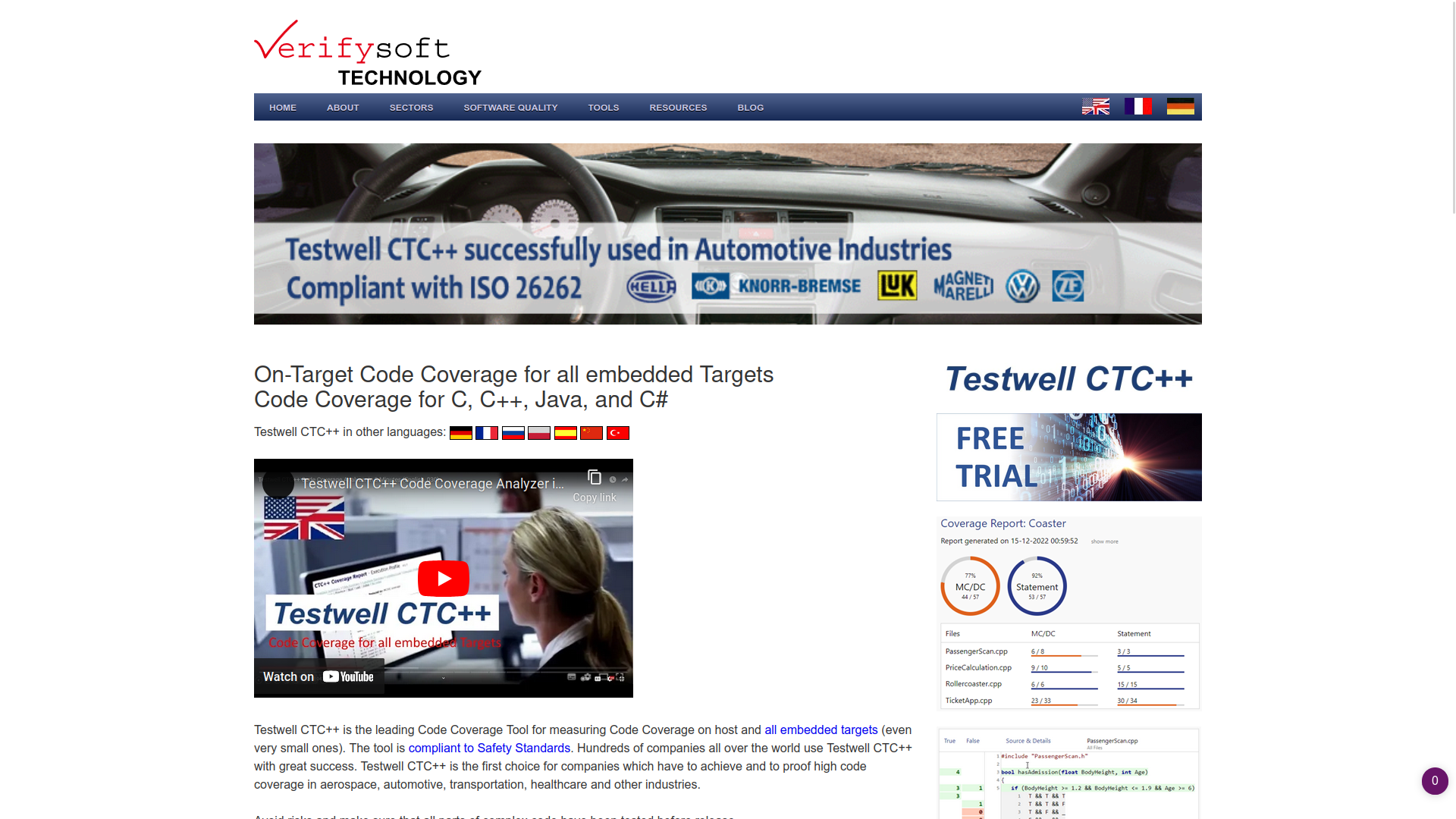
Testwell CTC++ is a code coverage testing tool for C, C++, C#, and Java applications that provide developers with detailed insights into the effectiveness of their testing efforts.
Testwell CTC++ can improve the quality and reliability of your software applications, ensuring that they are thoroughly tested and free of bugs.
It offers a range of advanced analysis features for software testing, including support for filtering and excluding specific parts of your codebase from analysis and support for custom test execution and instrumentation.
- Parasoft C++
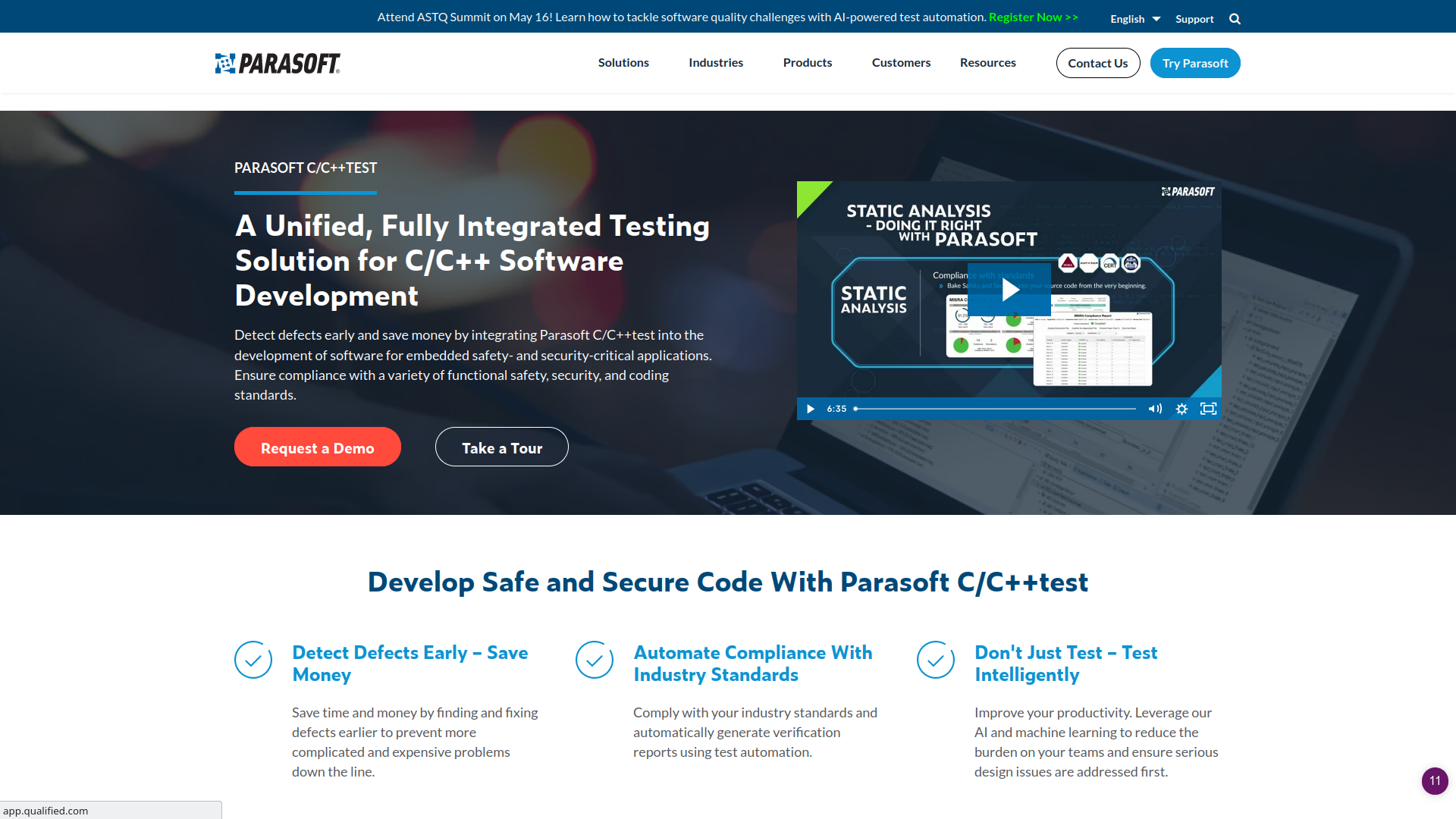
Parasoft C++ is a tool that helps you write better and more reliable C++ code. It checks your code for errors and suggests improvements, making writing high-quality software easier.
With Parasoft C++, you can analyze your code for bugs, memory leaks, and other issues, so you can fix them before they cause problems for your users.
Parasoft C++ also includes several other features, such as coverage data and reports, that can help you ensure your code is thoroughly tested and free from bugs.
The Best Code Coverage Tool

Allure TestOps is a comprehensive platform that provides a range of advanced features for code coverage testing. It enables developers to quickly generate and manage code coverage reports, making it an ideal tool for tracking progress and identifying potential issues.
With Allure, you can ensure your code is thoroughly tested and meets quality standards.
One of the critical advantages of Allure TestOps is its support for multiple programming languages, making it a versatile tool that can be used across a wide range of projects.
It provides coverage for various types of code, including unit tests, integration tests, and acceptance tests, allowing developers to identify and fix issues across the entire software development lifecycle.
Allure TestOps also offers integrations with popular testing frameworks, such as JUnit, TestNG, and Cucumber, making it an excellent choice for teams that use various testing solutions.
Features
Allure TestOps offers several advanced features that help developers manage code coverage testing effectively. Whether you're working with a single programming language or multiple languages and frameworks, Allure TestOps has you covered. Let us discuss them in detail:
1. Smart Test Cases
The problem:
- Manual Updates by Testers
- Special Person Updating Test Documentation
Manual updating of test documentation can be inefficient, error-prone, and difficult to manage due to human errors, inconsistency, lack of traceability, poor communication, and difficulty maintaining version control.
Also, if the test documentation is included in the test case itself, modifying the test case will force a rebuild of the software. For these reasons, an automated approach to update documentation automatically and maintain version control can be a better solution.
The solution:
Allure’s Smart Test Cases automatically generate test cases from code and update them in Allure TestOps.
With the help of an advanced code analysis system, Allure can recognize what has been added or changed and update the test cases based on the results received at the time of closing the launch.
The test result of an automated test is the best source of information about the test itself. Allure TestOps collects this information right from the source, i.e., from the test results, and uses this information to generate the test documentation.
2. Central Hub
Allure TestOps is a central hub for all your tests. It allows you to link manual and automated testing, making it easier to manage your testing processes. You can also use Allure TestOps to reinforce and speed up your CI/CD pipeline and get instant insights into your test coverage.
3. Metrics and KPIs
Metrics and KPIs enable you to review your product's status and create targets for your project. You can create your own set of KPIs using an Allure Query Language and keep track of your project's progress at a glance.
4. Insightful Testing
Allure TestOps provides a convenient and easy-to-use way to gain insight into your testing process. With just one report set up, you can get a complete picture of your test runs, including success rates, duration, flakiness, and other metrics sorted by features, stories, or categories. This allows you to identify potential issues and take corrective actions quickly.
5. Absolutely Polyglot
Allure TestOps is a versatile and flexible platform that offers native integrations with a wide range of programming languages and testing frameworks, including Java (JUnit, TestNG), Python (PyTest, Nose), JavaScript (Jasmine, Mocha), .NET, Cucumber, Go, and PHP.
You can use Allure TestOps with the tools you already know and love, making it easy to adopt and integrate into your existing workflows.
Allure TestOps Pricing
Allure TestOps offers you two plans - Cloud and Server.
Cloud
- Hosted on Allure's infrastructure.
- $39/ month per user or fewer.
- Secure AWS hosting.
- 60 GB storage included.
- Monthly or annual billing.
- From 1 user.
Server
- Hosted in-house.
- $30/ month per user or fewer.
- Full control over your instance.
- Private services integration.
- Quarterly or annual billing.
- From 5 users.
Conclusion
Code coverage testing is a crucial aspect of software development that ensures high-quality code and a seamless user experience.
With the help of these top 10 code coverage testing tools discussed in this blog, you can quickly generate code coverage reports, identify potential issues, and track progress throughout the software development lifecycle.
If you're looking for a comprehensive solution for code coverage testing, Allure TestOps is worth considering. It's an excellent choice for teams that use various testing solutions and want to streamline their CI/CD pipeline.
So, try Allure TestOps for free today and take your code coverage testing to the next level!
